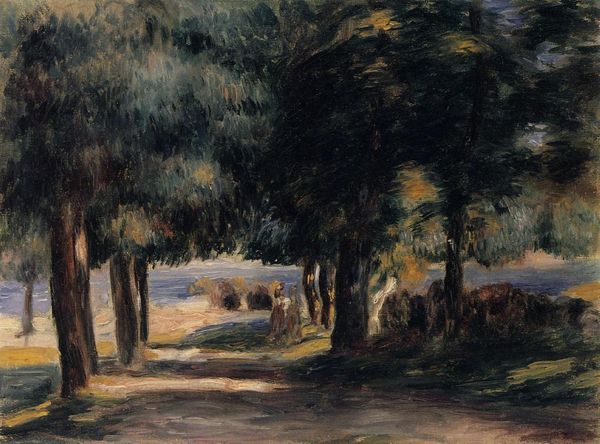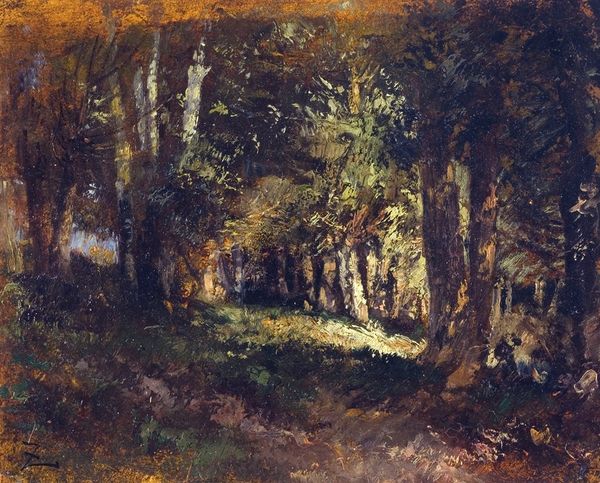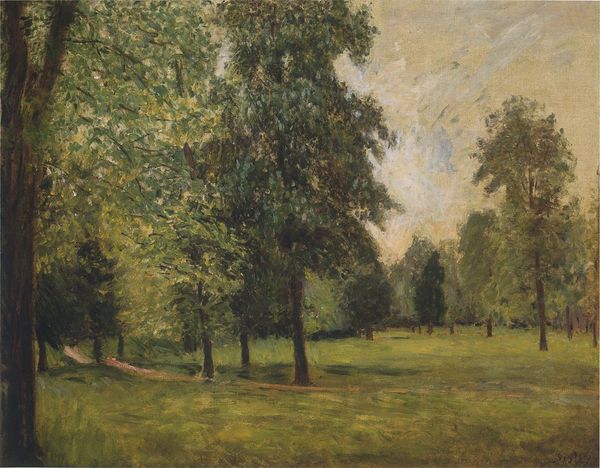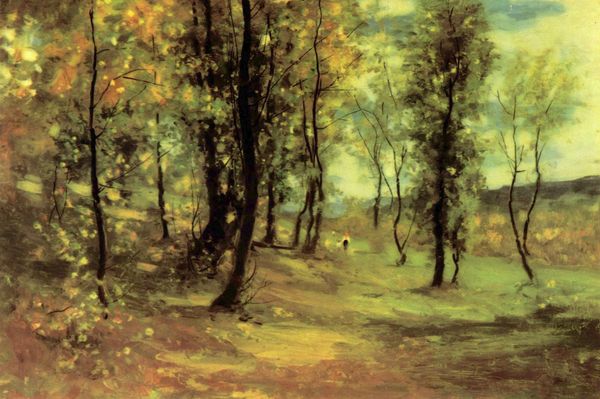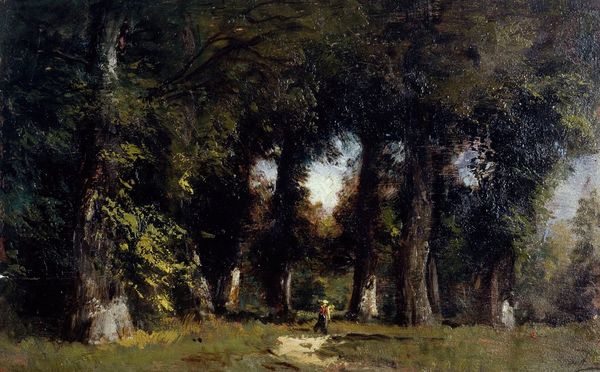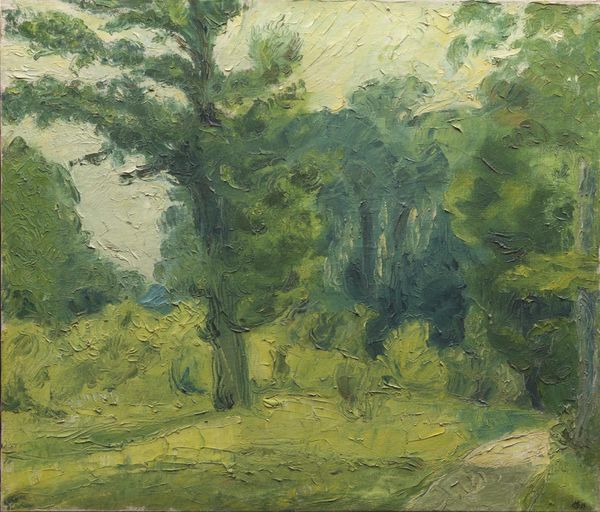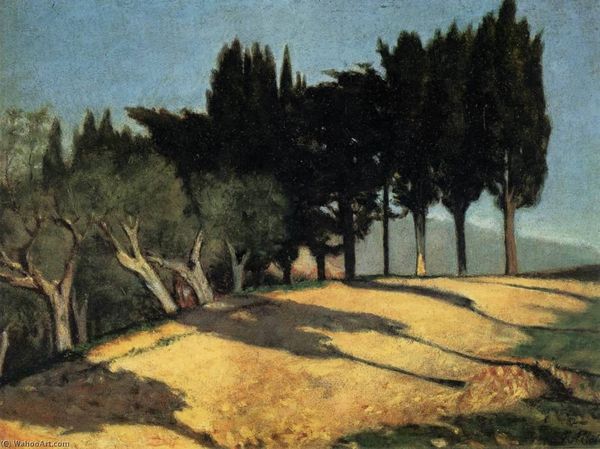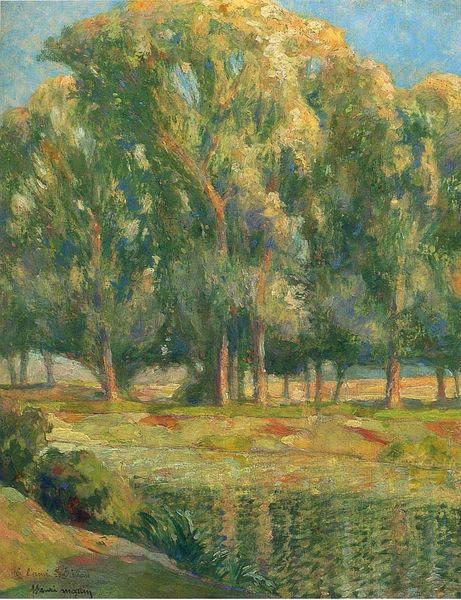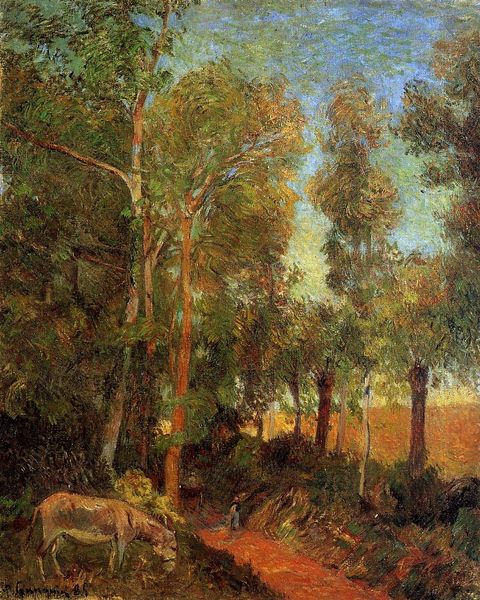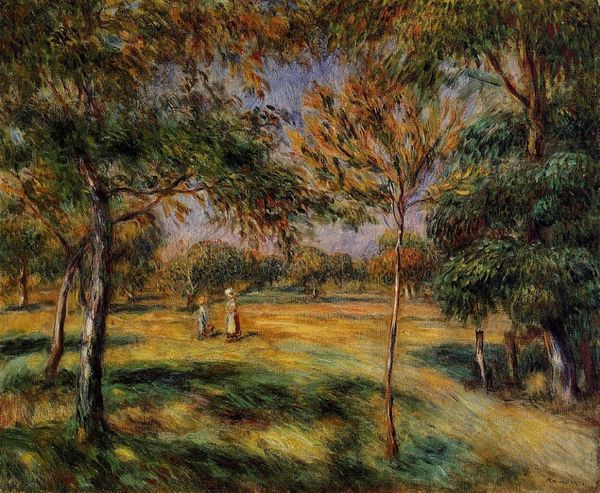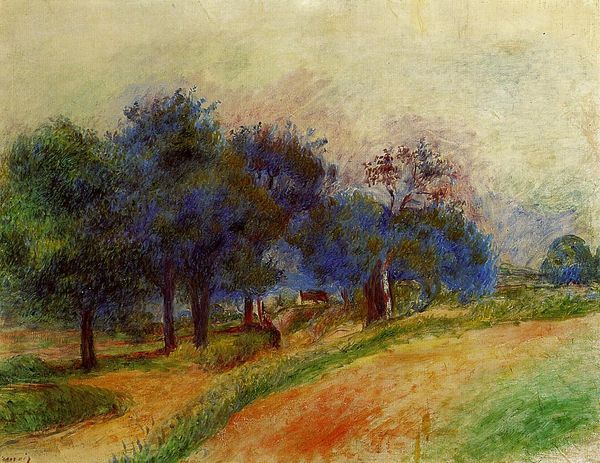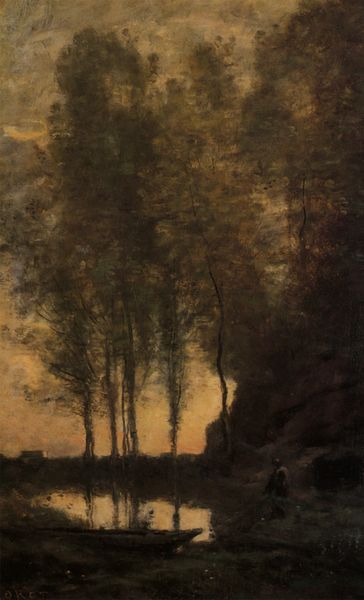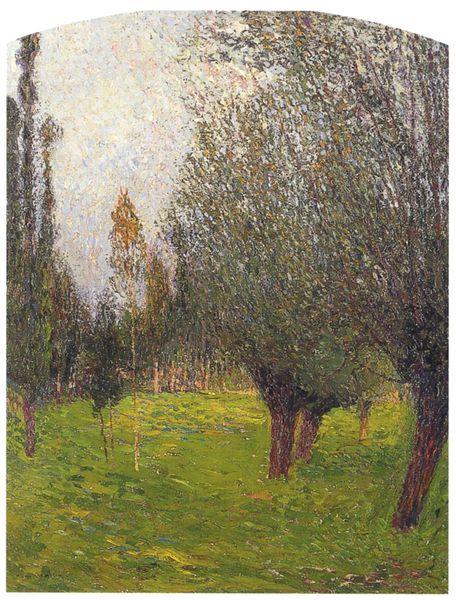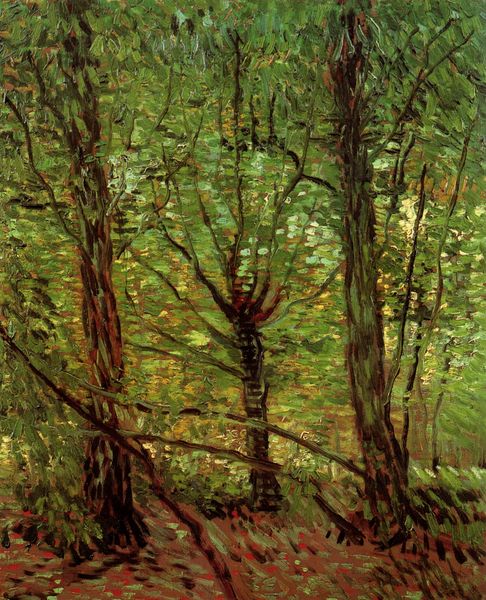
painting, plein-air, oil-paint
#
tree
#
painting
#
impressionism
#
plein-air
#
oil-paint
#
landscape
#
impressionist landscape
#
nature
#
form
#
forest
#
realism
Copyright: Public domain
Editor: Here we have Van Gogh's "Edge of a Wood" from 1882, an oil on canvas landscape. It strikes me as a rather somber, almost claustrophobic scene. What do you see in its composition? Curator: The structural arrangement is intriguing. Note the insistent verticals of the tree trunks, their rhythmic repetition dominating the pictorial space. Observe, however, how the artist resists complete closure: the eye is drawn through these vertical elements to the veiled luminosity in the background. The materiality of the paint itself is significant; thick impasto in areas, especially on the forest floor, suggests an almost tactile engagement with the subject. Editor: So, the brushwork itself contributes to the feeling of density? Curator: Precisely. Consider the tonal range: primarily earth tones punctuated by the glimmer of light. Does this restricted palette not reinforce the painting's sense of enclosure and quietude? Editor: It does. I hadn’t focused so closely on the colour. So, by reducing the color palette, and emphasizing vertical lines, you feel Van Gogh is purposely creating this sensation. Curator: Indeed. Through such formal means, the artist compels our attention. What might be easily overlooked as a simple landscape study reveals itself as a rigorous exercise in composition and perception. Editor: I see. Thanks so much, I’m viewing the structure, colour, and texture differently now. Curator: My pleasure. These close considerations give us means of talking about and better yet, thinking about what art means.
Comments
No comments
Be the first to comment and join the conversation on the ultimate creative platform.
